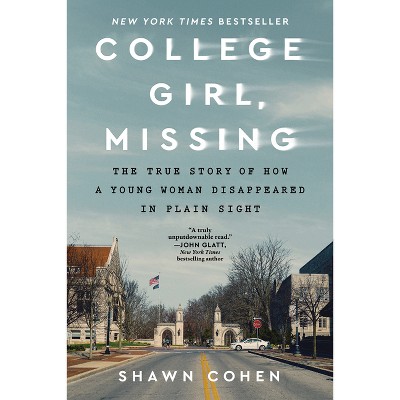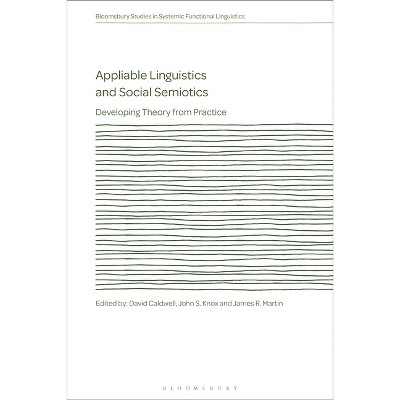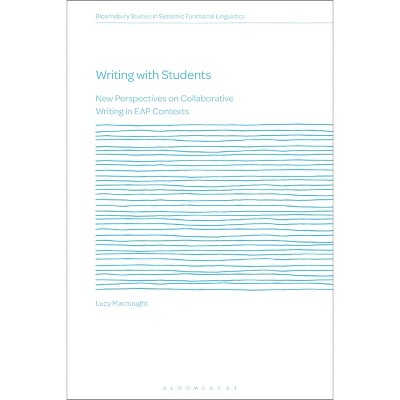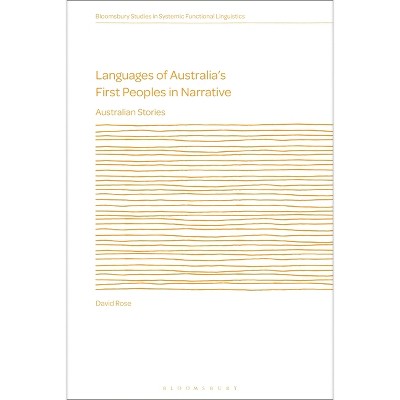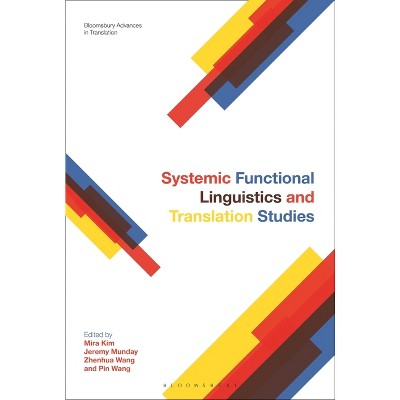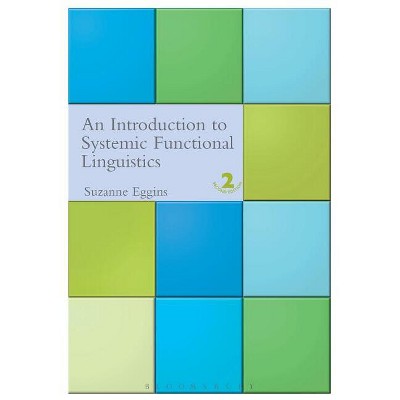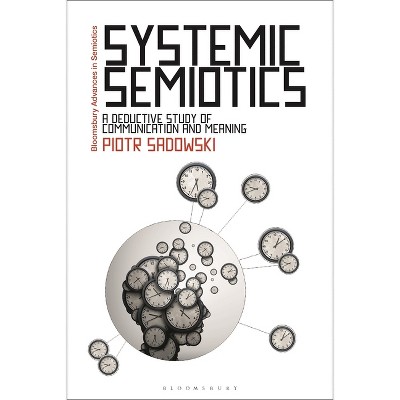Modelling Paralanguage Using Systemic Functional Semiotics - (Bloomsbury Studies in Systemic Functional Linguistics) (Paperback)

$39.99 when purchased online
Target Online store #3991
About this item
Highlights
- This book is the first comprehensive account of 'body language' as 'paralanguage' informed by Systemic Functional Semiotics (SFS).
- About the Author: Thu Ngo is Lecturer in Language and Literacy in the School of Education at Australian Catholic University, Australia.
- 280 Pages
- Language + Art + Disciplines, Language Arts
- Series Name: Bloomsbury Studies in Systemic Functional Linguistics
Description
Book Synopsis
This book is the first comprehensive account of 'body language' as 'paralanguage' informed by Systemic Functional Semiotics (SFS). It brings together the collaborative work of internationally renowned academics and emerging scholars to offer a fresh linguistic perspective on gesture, body orientation, body movement, facial expression and voice quality resources that support all spoken language.The authors create a framework for distinguishing non-semiotic behaviour from paralanguage, and provide a comprehensive modelling of paralanguage in each of the three metafunctions of meaning (ideational, interpersonal and textual). Illustrations of the application of this new model for multimodal discourse analysis draw on a range of contexts, from social media vlogs, to animated children's narratives, to face-to-face teaching. Modelling Paralanguage Using Systemic Functional Semiotics offers an innovative way for dealing with culture-specific and context specific paralanguage.
Review Quotes
Modelling Paralanguage Using Systemic Functional Semiotics is a highly relevant and necessary book for researchers in the humanities and social sciences interested in expanding Halliday's multifunctional theory to the study of meaning of the semiotic resources embodied in our voices, gestures, facial expressions and postures in order to enact social relations.
Teresa Oteíza, Associate Professor in Linguistics, Pontifical Catholic University of Chile, Chile
A timely and welcome addition to the field demonstrating robust developments in systemic functional theory and its application. This work draws together some of the leading experts in this domain, offering critical insights and various pathways for further exploration. A must-read for linguists and specialists in non-verbal communication alike.
Luke A. Rudge, Senior Lecturer in Linguistics, University of the West of England, Bristol, UK
This innovative theorizing of meaning-making via the facial expression, gesture, posture, body movement and vocal qualities such as loudness, pitch level and tension, that integrally complement spoken English discourse, provides new analytic frameworks to enhance research in social interaction in multiple disciplinary contexts - an indispensable resource for social semiotic research.
Len Unsworth, Institute for Learning Sciences and Teacher Education, Australian Catholic University, Australia
About the Author
Thu Ngo is Lecturer in Language and Literacy in the School of Education at Australian Catholic University, Australia.
Susan Hood is Honorary Associate Professor in the Department of Linguistics, University of Sydney, Australia.
Bradley A. Smith is Honorary Associate in the Department of Linguistics, University of Sydney, Australia. Michele Zappavigna is Associate Professor in the School of the Arts & Media at the University of Sydney, Australia.
Dimensions (Overall): 9.21 Inches (H) x 6.14 Inches (W) x .58 Inches (D)
Weight: .87 Pounds
Suggested Age: 22 Years and Up
Number of Pages: 280
Genre: Language + Art + Disciplines
Sub-Genre: Language Arts
Series Title: Bloomsbury Studies in Systemic Functional Linguistics
Publisher: Bloomsbury Publishing PLC
Theme: General
Format: Paperback
Author: Thu Ngo & Susan Hood & J R Martin
Language: English
Street Date: June 29, 2023
TCIN: 1003044366
UPC: 9781350277588
Item Number (DPCI): 247-49-9885
Origin: Made in the USA or Imported
If the item details above aren’t accurate or complete, we want to know about it.
Shipping details
Estimated ship dimensions: 0.58 inches length x 6.14 inches width x 9.21 inches height
Estimated ship weight: 0.87 pounds
We regret that this item cannot be shipped to PO Boxes.
This item cannot be shipped to the following locations: American Samoa (see also separate entry under AS), Guam (see also separate entry under GU), Northern Mariana Islands, Puerto Rico (see also separate entry under PR), United States Minor Outlying Islands, Virgin Islands, U.S., APO/FPO
Return details
This item can be returned to any Target store or Target.com.
This item must be returned within 90 days of the date it was purchased in store, shipped, delivered by a Shipt shopper, or made ready for pickup.
See the return policy for complete information.





